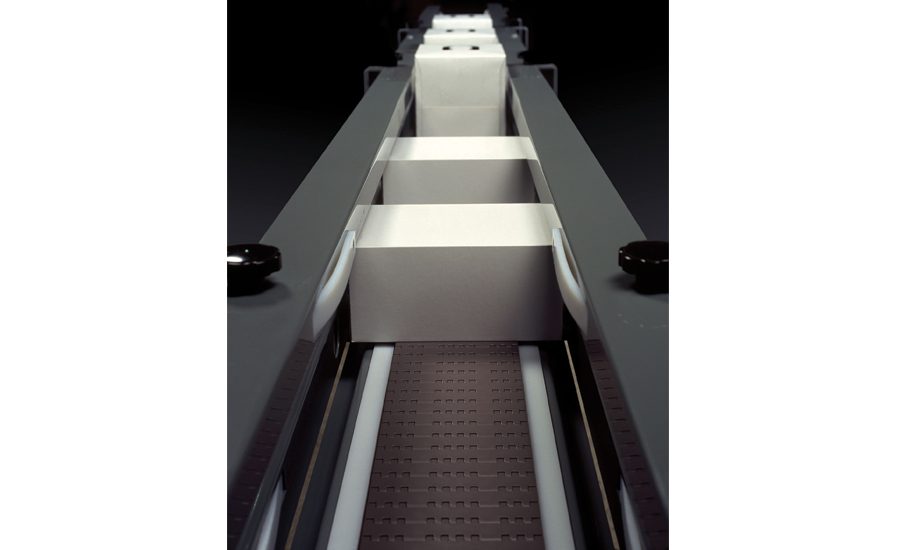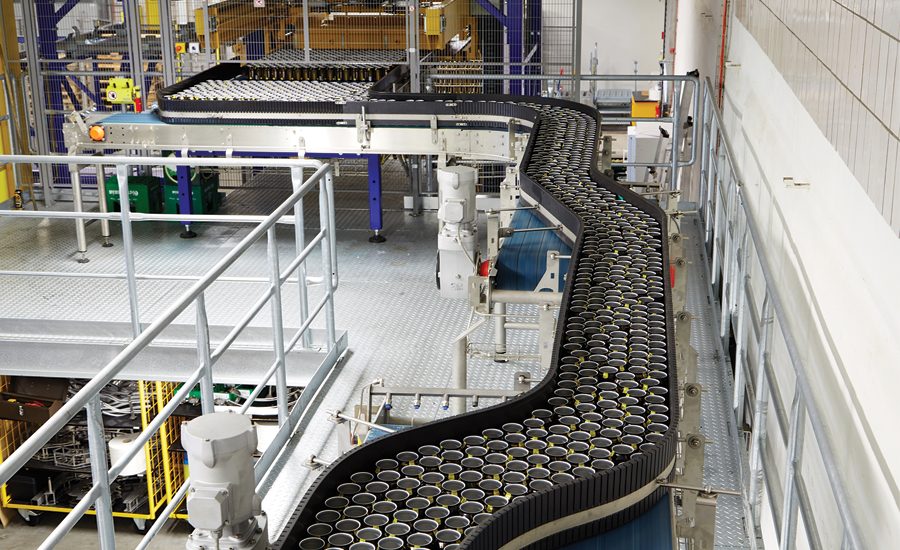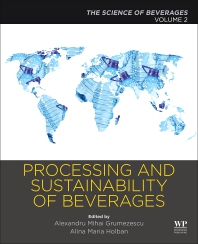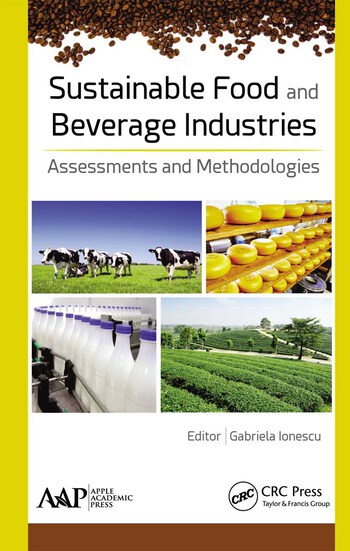Conveyors accommodate sustainability, flexibility
Packaging design, lightweight packaging impact conveyor innovations

Intelligrated offers its Accumat roller-less, zero-pressure accumulation conveyor that utilizes self-tracking, modular plastic belts for application design flexibility, the company says. (Image courtesy of Intelligrated)

Nord’s Bob Pierce says that conveyor systems retrofitted with 95-97 percent efficient drives can go a long way toward meeting energy efficiency goals. (Image courtesy of Nord Gear Corp.)


Consumers’ demands for sustainability, as well as a societal drive to “go green,” have impacted the beverage industry in many ways. As companies within the beverage market increase their awareness and actively push to make their products and facilities more eco-friendly, suppliers across all areas of the industry have accommodated, and conveyors are no exception.
Of the sustainability trends that have impacted the industry’s conveyor systems, continued movement toward more sustainable packaging has posed particular challenges. “Reduction in packaging materials continues to be a concern with conveyor choice,” says Bryan Boyce, product manager at Intelligrated, Mason, Ohio. “We are seeing not just a reduction in primary packaging material, but secondary packaging is also being reduced. A popular packaging change now is removing the bottom fiber boards or trays from shrink-wrapped packages.”
When it comes to conveyors, powered transition belts, spiral conveyors and low-back-pressure accumulation all are possible solutions, he adds.
Additionally, Phil Miller, president of Ambaflex Inc., Arlington, Texas, notes that packaging sizes and throughput weights are changing. “Especially in the warehouse environment, [packaging sizes] are larger, [and] we need to be able to accommodate more variety of sizes of packages than used to be, and we have products to meet those challenges,” he says.
He notes that weights, shapes and thicknesses, especially when working with PET bottles, can be challenging as lightweighted PET bottles can be less stable. “When they’re not so stable, they put them in a cardboard flat, as opposed to being wrapped. This can add challenges at transfer points,” he explains.
Bob Pierce, beverage industry specialist at Waunakee, Wis.-based Nord Gear Corp., adds that energy-efficient drives often can produce a quick return on investment, and can reduce a plant’s overall energy footprint. “The energy footprint in a large beverage plant is substantial,” he says. “Anything done to reduce that footprint can be a large reduction in operating costs and is less taxing on our already overloaded power sources. Green solutions impact not only the plant, but [the facility’s] overall community. Conveyor systems that are designed or retrofitted with 95-97 percent efficient drives go a long way toward meeting a company’s green goals.”
Many of Nord’s drives run at 95-97 percent efficiencies, according to Pierce. “That’s a huge cost reduction potential for many operators,” he says.
Choosing how you move
When it comes to choosing the right conveyor system for a beverage facility, industry suppliers note that a conveyor system needs to accommodate the packaging it’s moving.
“Non-roller conveyors for full-case conveying remain the conveyor-of-choice in the beverage industry,” Intelligrated’s Boyce says. “The majority of non-roller, zero-pressure accumulation conveyor designs still work unless the range of packaging sizes being handled is beyond the capability of the conveyor. What has happened in the last few years or so is the increased use of low-back-pressure accumulation conveyor styles to handle a wide range of beverage packs, especially shrink-wrapped packages.”
He adds that when choosing a conveyor system, it should be matched to the type of packaging, especially when it comes to package accumulation. “Be aware of packaging trends, how will you handle them if introduced at a later date?” he says.
Scott Shannon, global packaging team leader at Intralox, New Orleans, echoes similar sentiments. “The ability to meet current system requirements [is important],” he says. “[And so is the] ability to meet future package handling requirements — be future-proof.”
A low total cost of ownership and reliability also should be considered when choosing a conveyor solution, he says.
Flexibility also is a critical component of any conveyor system, says Bruce Gray, project manager at Jonesboro, Ark.-based Hytrol Conveyor Co. Inc. Although packaging can play a dominate role in choosing a conveyor system, a flexible system can accommodate a variety of package sizes on the same line, he explains.
“What we’re seeing is now in the beverage world, there’s a lot of specialty beverages, and how that impacts us is that we’re seeing a lot of projects out there that are smaller in nature to handle these specialty beverages,” he says.
He adds that low-volume lines, especially, require a flexible system.
Customer service and support after installation also should be considered when choosing a solution for a beverage facility, Gray notes. “The one thing we take a lot of pride in is our customer service and support, not only during quoting and project managing,” he says. “The quality of the conveyor is there … so [customer service] is definitely something we focus on — that after-sale customer support.”
Although seemingly aesthetic, stainless steel conveyor options over painted or other materials are experiencing an increased demand, Nord’s Pierce notes. “The beverage industry is starting to follow suit with numerous food industry segments as they move toward stainless, or the more cost-effective stainless alternative drives,” he says. “Rust and flaking paint is unacceptable in today’s safety and contamination-free environment requirements.”
Looking for a reprint of this article?
From high-res PDFs to custom plaques, order your copy today!









